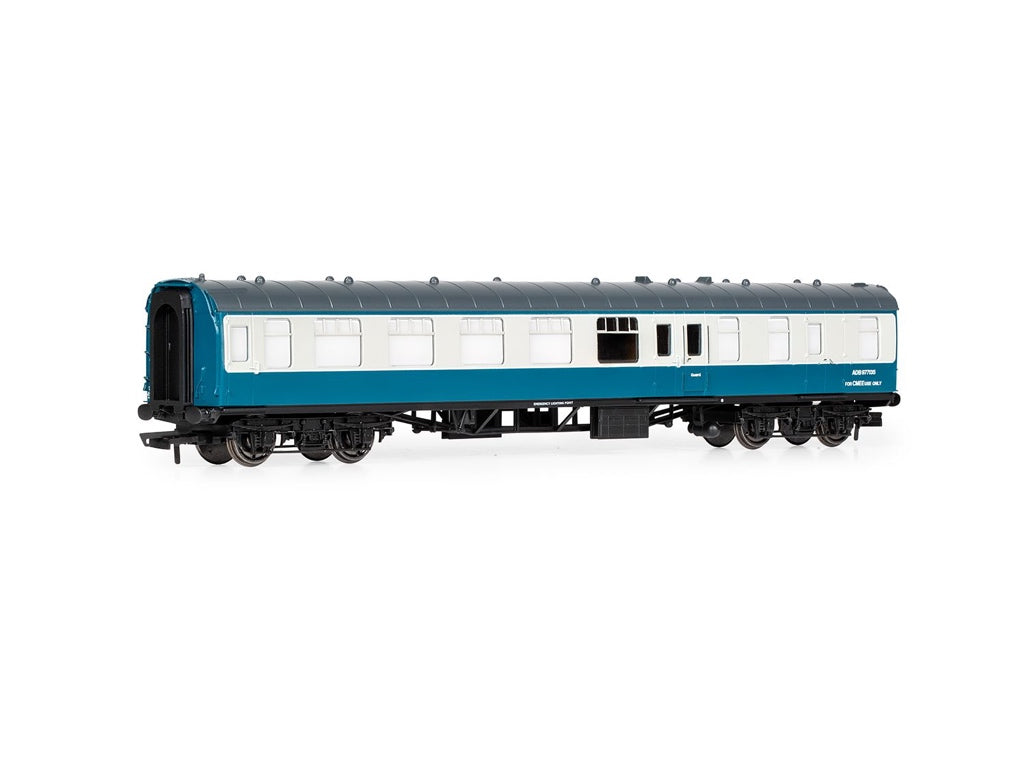You need to choose options for product.
-
 files/r40348_1.jpg
files/r40348_1.jpg
British Railways Mark 1 is the family designation for the first standardised designs of railway carriages built by British Railways (BR) from 1951 until 1974, now used only for charter services on the main lines or on preserved railways.
Following nationalisation in 1948, BR had continued to build carriages to the designs of the "Big Four" companies (the Great Western, Southern, London Midland and Scottish and London and North Eastern railways), and the Mk1 was intended to be the standard carriage design for use across all lines, incorporating the best features of each of the former companies' designs. It was also designed to be much stronger than previous designs, to provide better protection for passengers in the event of a collision or derailment.
An unusual feature of the design was the bodyside tumblehome curvature, of 28 ft (8.53 m) radius and just noticeable; the windows had flat glass and consequently the upper quarter was separate and in a different plane from the lower glazing, with an intervening transom, and the steel panels were recessed on either side of each window opening to accommodate the difference between the flat glass and the curved sides. The opening portion of the windows were provided with sliding ventilators, with an external aerofoil for draught-free ventilation, the correct opening position being marked by a pair of arrows.
Doors were provided with frameless droplights manufactured by Beclawat; these were supported by a spring-loaded lazytongs mechanism inside the lower part of the door, and the top of the window had a sprung metal clip engaging in slots on either side of the window opening. Mk1s were painted in a stunning array of liveries, and our model carries with it a smooth and soft blue and grey.
- Regular price
- £44.99
- Sale price
- £38.24
British Railways Mark 1 is the family designation for the first standardised designs of railway carriages built by British Railways (BR) from 1951 until 1974, now used only for charter services on the main lines or on preserved railways.
Following nationalisation in 1948, BR had continued to build carriages to the designs of the "Big Four" companies (the Great Western, Southern, London Midland and Scottish and London and North Eastern railways), and the Mk1 was intended to be the standard carriage design for use across all lines, incorporating the best features of each of the former companies' designs. It was also designed to be much stronger than previous designs, to provide better protection for passengers in the event of a collision or derailment.
An unusual feature of the design was the bodyside tumblehome curvature, of 28 ft (8.53 m) radius and just noticeable; the windows had flat glass and consequently the upper quarter was separate and in a different plane from the lower glazing, with an intervening transom, and the steel panels were recessed on either side of each window opening to accommodate the difference between the flat glass and the curved sides. The opening portion of the windows were provided with sliding ventilators, with an external aerofoil for draught-free ventilation, the correct opening position being marked by a pair of arrows.
Doors were provided with frameless droplights manufactured by Beclawat; these were supported by a spring-loaded lazytongs mechanism inside the lower part of the door, and the top of the window had a sprung metal clip engaging in slots on either side of the window opening. Mk1s were painted in a stunning array of liveries, and our model carries with it a smooth and soft blue and grey.
- Regular price
- £44.99
- Sale price
- £38.24
Flexible payment terms now available through Clearpay, Klarna and PayPal. Just select your desired payment method at the checkout stage.
Couldn't load pickup availability
Share


